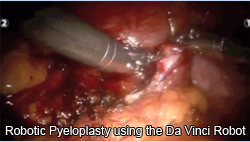Laparoscopic urology has made a big impact on the practice of urology. Urology was traditionally at the forefront of all endoscopic advancements in surgery. The first laparoscopy was done using urological endoscopes! Laparoscopic urology made its presence felt around the early 1990s but it isn’t until the late 90s and early part of this century that laparoscopic urology got adopted more widely. One of the main hurdles has been that laparoscopic urology, unlike general surgery and surgical gastroenterology, has no ‘easy’ procedures (such as lap cholecystectomy or appendicectomy, with due apologies to the general surgeons!). All the lap urology procedures fall under the category of advanced laparoscopy. Hence, the learning curve has been steep and a vast majority of urologists in India still do not perform lap urology.

Since 2005 we have now performed a large number of laparoscopic urology procedures ranging from ablative removal of diseased kidneys to complex reconstructions such as pyeloplasty. Laparoscopic procedures often take longer to perform than their open counterparts and may occasionally require conversion.
 Dr.K.V.R. PRASAD
Dr.K.V.R. PRASAD